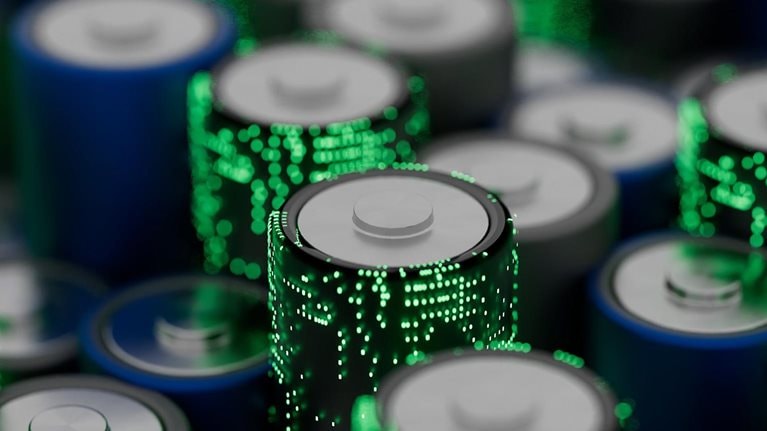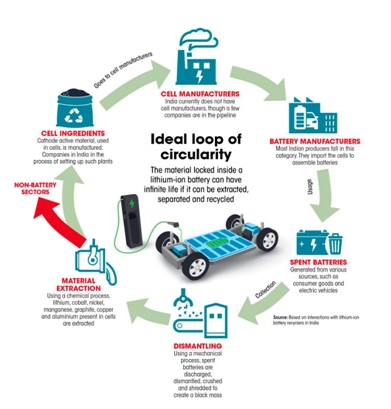Recycling Electric Vehicle Batteries: A Sustainable Future

by AutoExpert | 30 September, 2024
Ever wondered whаt happens to аll those electric vehicle (EV) batteries once they've lived their life? Well, they're pаcked with some seriously valuable—and somewhаt toxic—materials that you wouldn't want just lying around. Fortunately, recycling them is not just a possibility; it's already underway.
Let's dig into this a bit. Imagine every new EV zipping down the road with a battery loaded with pricey materials, sourced from places we're not too thrilled about. If we don't recycle these batteries properly, we're looking at some real environmental headaches. But fear not—the financial worth of these materials means they're unlikely to end up forgotten in a junkyard.

When an EV reaches the end of its road, so to speak, the materials in its battery are as good as gold. With a bit of processing, we can actually take these old lithium-ion batteries and turn them into brand new ones. This isn't just a pie-in-the-sky idea; it’s happening right now, and it leans on some tried and true methods we've used for ages to reclaim valuable stuff from what we toss out. Yet, the rare and hazardous nature of these battery components means we’ve got to keep innovating new ways to handle them better, especially as more EVs hit the streets.
Battery Basics
Before we dive deeper, let's cover some basics to make sure we’re all on the same page:
Battery Cells: These are the building blocks of an EV battery, each a tiny powerhouse on its own. You’ve got an anode and a cathode separated by an electrolyte that kicks off the magic—electricity! These cells come in different shapes: cylindrical ones are like the AA batteries in your remote, prismatic ones are boxed up tightly to save space, and then there are pouch cells, which are lighter and packed in a flexible pouch.
Battery Modules: Imagine a bunch of these cells linked together—that’s what a module is. It’s part of what makes up the entire battery pack of an EV, helping with easier monitoring and maintenance.
Battery Packs: The whole shebang that powers the car, neatly packed usually under the floor of your EV. These packs can be complex, and if one cell goes bad, it can mean having to replace entire sections.

Recycling vs. Refurbishing
Think of your smartphone’s battery—it’s not all that different from what’s in an EV. Companies like Redwood Materials are at the forefront here, recycling everything from tiny batteries to massive EV packs. They literally break down these batteries into their base elements in a process involving something called "black mass"—which sounds a bit ominous, but it’s just a mix of metals like nickel, manganese, and cobalt.
Not all batteries need to be ripped apart, though. Many can be fixed up and used again, especially those from cars that are totaled or recalled. It’s kind of like refurbishing other car parts, like transmissions or steering racks.
Standardizing to Simplify
Wouldn’t it be easier if all EV batteries were a bit more, well, uniform? Some folks in the industry, like those at Cox Automotive, think so. They believe that in a few years, we might see a more standardized approach to how batteries are made, which would make recycling and manufacturing a lot smoother.

A Little Help from Tech
Sorting out all the different types of batteries for recycling is pretty hands-on work, but technology is starting to make things easier. At Redwood, for instance, they're using advanced sorting tech and even AI to help identify and process different battery types faster and more efficiently.
Looking Ahead: Solid State and Beyond
And let's not forget about what's coming down the pipeline, like solid-state batteries. These are the next big thing, promising even better performance for future EVs. Recycling them will be crucial, and getting a jump on how to handle these technologies now is key.

The Bigger Picture
Thanks to laws like the Inflation Reduction Act, there’s more incentive than ever to boost local battery production, which means more recycling, too. This could help meet a significant portion of our material needs without new mining.
The bottom line? The more we refine the recycling process, the cheaper and more eco-friendly batteries will become. Who knew that what powers your EV could one day get a second life powering another? That’s recycling magic for you!

















